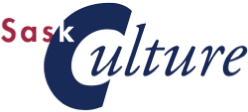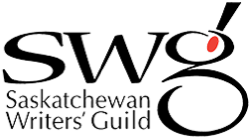Mari-Lou Rowley – We live in a landscape that is subtle and overwhelming at the same time. Highways and roads poker straight and lead in one-point perspective to the horizon. Thunderstorms and hailstorms, aurora borealis and boreal forests. How do these landscapes inspire you and what do you mean when you talk about “Landscape as Motif”?
Anne Brochu Lambert – It’s a point of entry. Especially the series that is in this publication of Grain. The starting point was about 15 years ago when there was a significant shift in my interests. I was very much into the human body, and its social and political meanings. When I did the switch toward landscape it was because Saskatchewan was an adopted territory. I’m not from here but I’ve lived here for over thirty years now. This is home, no question, but it took me that long to figure out a visual language for the overwhelming surroundings to decant into my work.
So this is how my work in landscape motif came about. This series is definitely a mixture of my take on the environment that has been very much transformed by the human presence. So there is still this thread between my interest in humanity but now it is filtered through this landscape motif. Abstraction is my means of taking the elements, recomposing them and applying some emotional connection. There are three different series published in this issue of Grain 49 —‘Innerscapes / États,’ ‘Impermanent / Éphémère, and the one on the cover and inside cover ‘Passages.’
ML – What drew you to encaustic work?
ABL – I was attracted to encaustic years ago and it took a long time before I was able to find enough information about it to be able to work properly with the medium and that happened almost the same time when I did the shift towards landscape.
What I really appreciate with encaustic is it’s both a very ancient medium with very rich history and there is also bit of alchemy about it. You can create your own colours, you have to mix the resin, pigment, and wax, and there is a technical knowledge that you have to develop in order to properly use it. At the same time it is so flexible that it can be experimental, so I don’t feel that I’m using an old medium. I feel that it’s very much of this time and can capture what I want to say in my work.
The drawback is that in Canada it’s a seasonal medium and we need to have a certain temperature to work with it. I need to have a good ventilation system because the fumes are not good for your health. It needs to be warm out there for me to be able to work in my studio with that medium. So I can paint in encaustic and collage and do all sorts of things—it’s very much a mixed media. It’s not just paint, it’s paper, metallic leaf, it’s a very diverse field to play with.
For the rest of the year I do a lot of collage with other media, drawing, and digital work as well.
MLR – Initially, when Shirley and I were looking at your artwork, I chose a more traditional landscape, but Shirley chose this one, Innerscapes 2. It’s much more abstract, with the cheese cloth showing beneath a thin film of wax. Why did you choose to leave the material evident? Can you talk more about the materiality of your work?
ABL – I am all for mixing the materials and sometimes it is all about the layering and sometimes it’s about subtracting. Nothing is taboo in order to achieve what I would call a narrative within the composition. In terms of selecting materials there are even some papers that I consider vintage—from old publications and patterns that have actually been collected here in Saskatchewan. It’s almost like incorporating a piece of history of the province within the work itself, and it’s subtle. People don’t know that, but I do.
I’m going back to the fact that some of these pieces more easily relate to the landscape motif. Each of these pieces in the series have that horizontal band across the bottom so it’s the anchor for the entire series. It’s definitely the prairie horizon and to me it’s a code for people to recognize the landscape, but then it can go somewhere else depending on what your state of mind is when you look at the work. That’s what I hope, anyway. And the diverse materials that I use, some of them can be a bit of a point of entry.
Each work of the series ‘Innerscapes / Éphémère’ are very small, some 8” x 10” and others are 11” x 14,” the largest of that series. I hang them as a group, so you have to engage with the entire body when viewing the work, you have to get close to really see it. The photo-based series in the magazine are larger, and include 16” x 20”, 24” x 16” and 30” x 24” pieces.
MLR – The colours of this cover piece are so subtle and there are so many things you could think of, like burning stubble in the spring, or a grass fire—it’s very emotional.
ABL – I’m so glad to hear that! It should trigger some emotional response, not just intellectual.
MLR – You also mentioned multimedia work, so I went into your site and was captivated by “Voix et passages.” You talk about the genesis of the work, how Creativity runs in your family, you, your mother, your grandmother, your daughter. Often we don’t think of what our grandmothers or mothers did as creative. Like knitting, for example. Tell me about the genesis of this work and the multimedia aspect of it.
ABL – The project was an open call for a collective exhibition at CAVA : Centre des arts visuels de l'Alberta (Edmonton). Sabine Lecorre-Moore, the curator proposed a central theme of “women” and we could explore various paths. The exhibition received funding from the Canada Council for the Arts.
My proposal was the transmission of knowledge and values through generations. When I was researching the project I realized it had this strong thread again through generations. I had a valuable archive of interviews that I had done with my grandmother when I was fourteen years old. So there is painting, drawing, photographs from the family archives and I reworked them using digital tools. And then to further engage with the work there is also a soundtrack of my daughter, who is an actress and writer—she wrote a piece for the project. So we hear segments of my grandmother’s interview, and myself, and my mother who she helped sort through collection of photographs.
On the technical front, an entire high-tech sound system is hidden behind the installation itself; its soundtrack plays 4 different stories, in a random fashion, incorporating all four womens’ voices each time. The sound is triggered when someone approaches the work, thanks to a motion sensor camouflaged in the central panel.
So it is a very long project and complicated by the pandemic. I worked it on it for 20 months. I’m thankful for support from the Sask Arts Board for supporting this work.
MLR – Is there a link to the final installation?
ABL – Yes, there is a link on my webpage. The video was the only way to experience the project due to Covid. I’m looking forward to having it shown again in the future, but the context of the collective show is important.
MLR -- You have some great suggestions about channeling creativity through lockdown and Covid. Is keeping busy essential for your creative energy to flow?
ABL – Being in the atelier during the pandemic was essential since I was working on the project “Voix et Passages,” and also kept my daily routine of warm-up drawings to maintain my well-being because it has been very challenging on many fronts. I do tend to juggle many projects at once and of course my involvement in the arts community is part of that. During the pandemic, these took over my schedule at times. Nowadays, I’ve made an even more conscious decision to renew these engagements because I believe we are at crossroads and I hope to contribute in a meaningful way. But I always have a creative endeavour on the go. This summer, I’m getting new works ready for the provincial Art Fair Art Now and completing a series for a show in Fall 2023.
MLR – What are some of your community commitments?
ABL – I am a Board Trustee of the MacKenzie Art Gallery. I’m part of Francophone community, and have been elected to the national board of the FCCF, Fédération culturelle canadienne- française, a cultural and artistic organization. I am also president at the provincial level. So it took time to juggle these commitments with my own practice. I do have a strong work ethic, but I am now in between projects because community involvement takes a big chunk of my time because I realize we are at a crossroads and people believe that I can contribute. But it’s not always easy or done in a very Zen way. I would rather have more time creating.
I do believe that any life experience brings inspiration and depth to the work and that’s the saving grace I think.
MLR – I think that is true of any art project and this is a perfect point to end the interview. Thank you so much Anne.
ABL – My pleasure.




